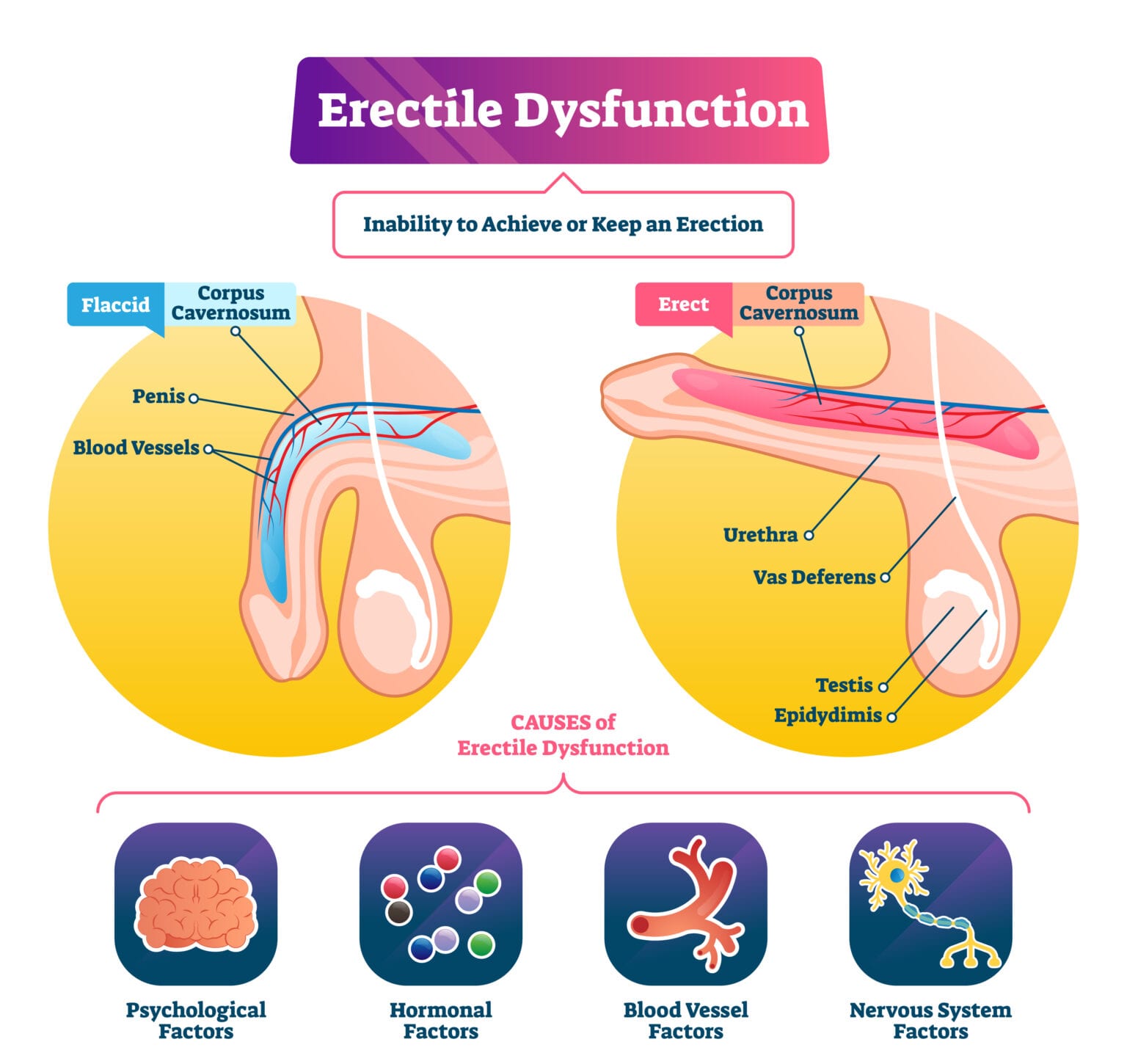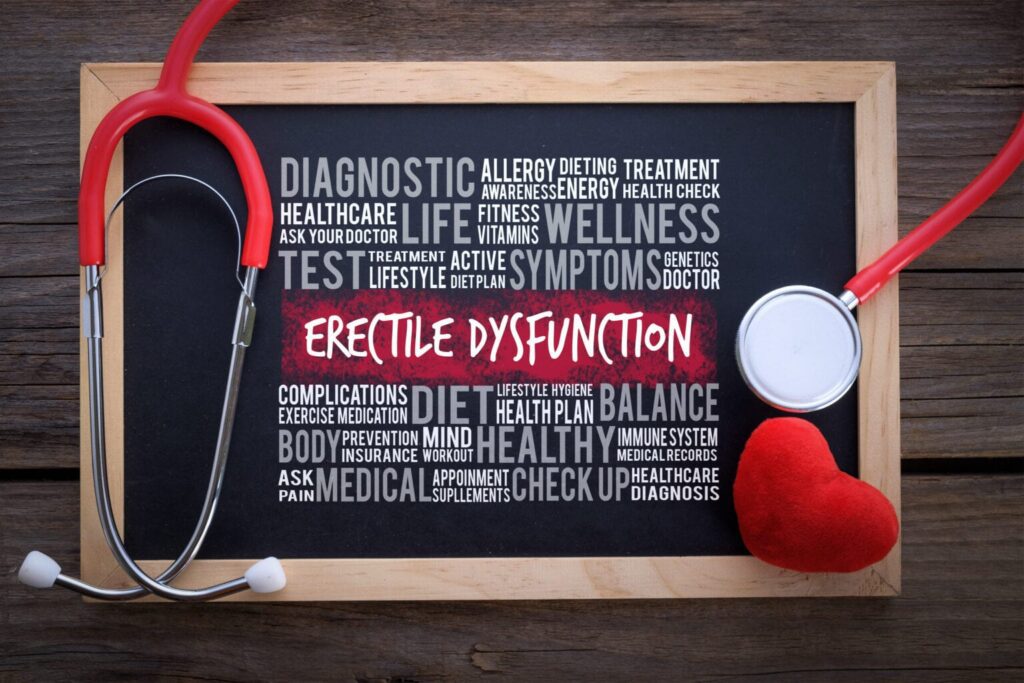Looking for Expert-Level VA Claim Answers?📱Call Us Now! 737-295-2226
Hi Fellow Veterans, Brian Reese here, The VA Claims Insider, and in this expert-level post, I’m going to reveal and explain “How to Service Connect Your VA Disability Erectile Dysfunction Secondary to PTSD,” even if you’ve already filed, been denied, or gave up hope.
You’ll also learn about secondary service connection and the “3 Magic Pillars” of success to include medical evidence requirements.
Lastly, you’ll discover how to obtain a credible Nexus Letter to help you prove secondary service connection under the law.
VA Disability Erectile Dysfunction Secondary to PTSD – Is There a Connection?

Yes, plenty of medical research studies point to the prevalence of Erectile Dysfunction (ED) in veterans with Post Traumatic Stress Disorder (PTSD).
In fact, veterans with PTSD experience higher rates of sexual dysfunction.
A review study published by the Journal of Sexual Medicine in February 2015 found that male Veterans with PTSD were significantly more likely than their civilian counterparts to report erectile dysfunction or other sexual problems.
In another study of male combat veterans diagnosed with PTSD, 85% reported erectile dysfunction, compared with a 22% rate among male combat veterans without any mental health diagnosis.
PTSD involves anxiety, stress, and often, interpersonal communication problems and depression.
Antidepressants and anti-anxiety drugs, which may be prescribed for veterans who develop PTSD symptoms, can cause erectile dysfunction, as can other medications.
Can ED be secondary to PTSD?

Yes, ED can be service-connected secondary to PTSD.
While ED is assigned a 0% rating under SMC-K, there are five other scheduler rating categories that are related to Erectile Dysfunction, the penis, and testicles, which are rated as follows:
DC 7520: If half or more of the penis is removed, then it is rated 30%. This condition can also be rated under the urinary rating system if that can result in a higher rating than 30%.
DC 7521: If the Glans is removed, it is rated 20%. This condition can also be rated under the urinary rating system if that can result in a higher rating than 20%.
DC 7522: If the penis is deformed and cannot erect, then it is rated 20%. The following two requirements must be met before a 20% evaluation can be assigned for deformity of the penis with loss of erectile power under 38 CFR 4.115b, DC 7522:
- The deformity must be evident, AND
- The deformity must be accompanied by loss of erectile power.
DC 7523: Atrophy of the testicles is when they shrink and become nonfunctional. If one testicle is atrophied, then it is rated 0%. If both testicles are atrophied, then it is rated 20%.
DC 7524: If both testicles are removed, it is rated 30%. If only one testicle is removed, it is rated 0%. There are a few conditions for this code. If the testicle was removed because it was not fully developed or did not descend, then it is not ratable since this is a pre-existing condition and not directly related to military service. If the testicle had to be removed because of an injury or condition that is related to military service, and the remaining testicle is not functioning (whether it is related to service), it is rated 30%.
The VA Ratings for ED secondary to PTSD depends upon the severity of your ED, and how your ED symptoms affect your work, life, and social functioning.
In addition to SMC-K for ED (most common), ED can also be rated differently and separately (scheduler vs. extra scheduler), depending upon the specifics of your medical diagnoses and severity of symptoms in accordance with one of the five other DCs listed above.
VA Disability Ratings for ED Explained:
How is Erectile Dysfunction rated by the VA?
Medical Research Study:
Sexual dysfunction in veterans with post-traumatic stress disorder
BVA Case History Example:
ED secondary to PTSD is granted
What is the VA Rating for Erectile Dysfunction Secondary to PTSD?
Most veterans will receive a 0% non-compensable (scheduler) rating for ED secondary to PTSD.
However, service connection for ED secondary to PTSD makes veterans eligible for Special Monthly Compensation (SMC) for loss of use of a creative organ — this is considered “extra scheduler” compensation.
The current SMC-K rate (extra scheduler) for 2022 is $118.33 per month, which is paid in addition to a veteran’s regular (schedular) service connected disability compensation.
All you need to do is open and file a new VA claim on the VA.gov website, and add a new condition for ED secondary to PTSD.
What is Secondary Service Connection?
In accordance with 38 CFR § 3.310 disabilities that are proximately due to, or aggravated by, service-connected disease or injury, a current disability condition, which is proximately due to or the result of a service-connected disease or injury shall be service connected.
Service connection on a secondary basis requires a “showing of causation.”
A showing of causation requires that the secondary VA disability claim is “proximately due to” or “aggravated by” another service-connected disability.
There are three evidentiary elements that must be satisfied to prove VA secondary service connection under the law:
- A medical diagnosis of the secondary VA disability you’re attempting to link to the current service connected disability (must be documented in a medical record) AND
- A current service-connected primary disability (e.g., your current list of service connected disabilities from your VA.gov account) AND
- Medical nexus evidence establishing a connection between the service-connected primary condition AND the current disability you’re trying to connect secondary (e.g., Migraines, Sleep Apnea, GERD, IBS, Erectile Disfunction / Female Sexual Arousal Disorder, Radiculopathy, etc.)
VA secondary conditions for secondary service connection include any of the 900+ disabilities listed in CFR Title 38, Part 4, the Schedule for Rating Disabilities that can be service connected SECONDARY to a current VA disability you’re already rated for at 0% or higher.
3 Evidentiary Elements for Secondary Service Connection

The first part can be satisfied with any existing medical evidence in service treatment records, VA medical records, or any private medical records.
The second part can be satisfied with a veteran’s existing service-connected disability rated at 0% or higher.
The third part, and often the missing link needed to establish secondary service connection, can be satisfied with a credible Medical Nexus Letter (Independent Medical Opinion) from a qualified medical provider.
>> Click HERE for a list of Doctors Who Write VA Nexus Letters for Veterans!
Did you know there are HUNDREDS of common secondary VA claims that you can get service connected by law?
Truth bomb here veterans…
You could be missing out on thousands of dollars of tax-free disability compensation you deserve by law, and not even realize that your current VA disability might be caused or aggravated by an existing service connected disability.
Pro Tip: A Nexus Letter with high probative value is RECOMMENDED to help establish secondary service connection.
Why?
Because “Medical Nexus Evidence” is needed to satisfy the third evidentiary element that must be satisfied to prove your secondary VA claim on an “at least as likely as not” basis.
Click HERE to read our Top 3 Reasons Why Veterans Should Get an Independent Medical Opinion (Nexus Letter).
Need a Nexus Letter to Help Prove Service Connection?
Click HERE now to join VA Claims Insider Elite, our premier education-based membership program, which also gets you discounted access to independent medical providers in our referral network for medical examinations, VA disability evaluations, and credible Nexus Letters for a wide range of conditions!
We’re a company OF veterans, BY veterans, FOR veterans and have helped over 15,000 veterans since 2016.
Are you next?
At VA Claims Insider, we help veterans get the VA rating they deserve in less time, if you’ve already filed, been denied, or have given up hope.
About the Author

Brian Reese
Brian Reese is a world-renowned VA disability benefits expert and the #1 bestselling author of VA Claim Secrets and You Deserve It. Motivated by his own frustration with the VA claim process, Brian founded VA Claims Insider to help disabled veterans secure their VA disability compensation faster, regardless of their past struggles with the VA. Since 2013, he has positively impacted the lives of over 10 million military, veterans, and their families.
A former active-duty Air Force officer, Brian has extensive experience leading diverse teams in challenging international environments, including a combat tour in Afghanistan in 2011 supporting Operation ENDURING FREEDOM.
Brian is a Distinguished Graduate of Management from the United States Air Force Academy and earned his MBA from Oklahoma State University’s Spears School of Business, where he was a National Honor Scholar, ranking in the top 1% of his class.




